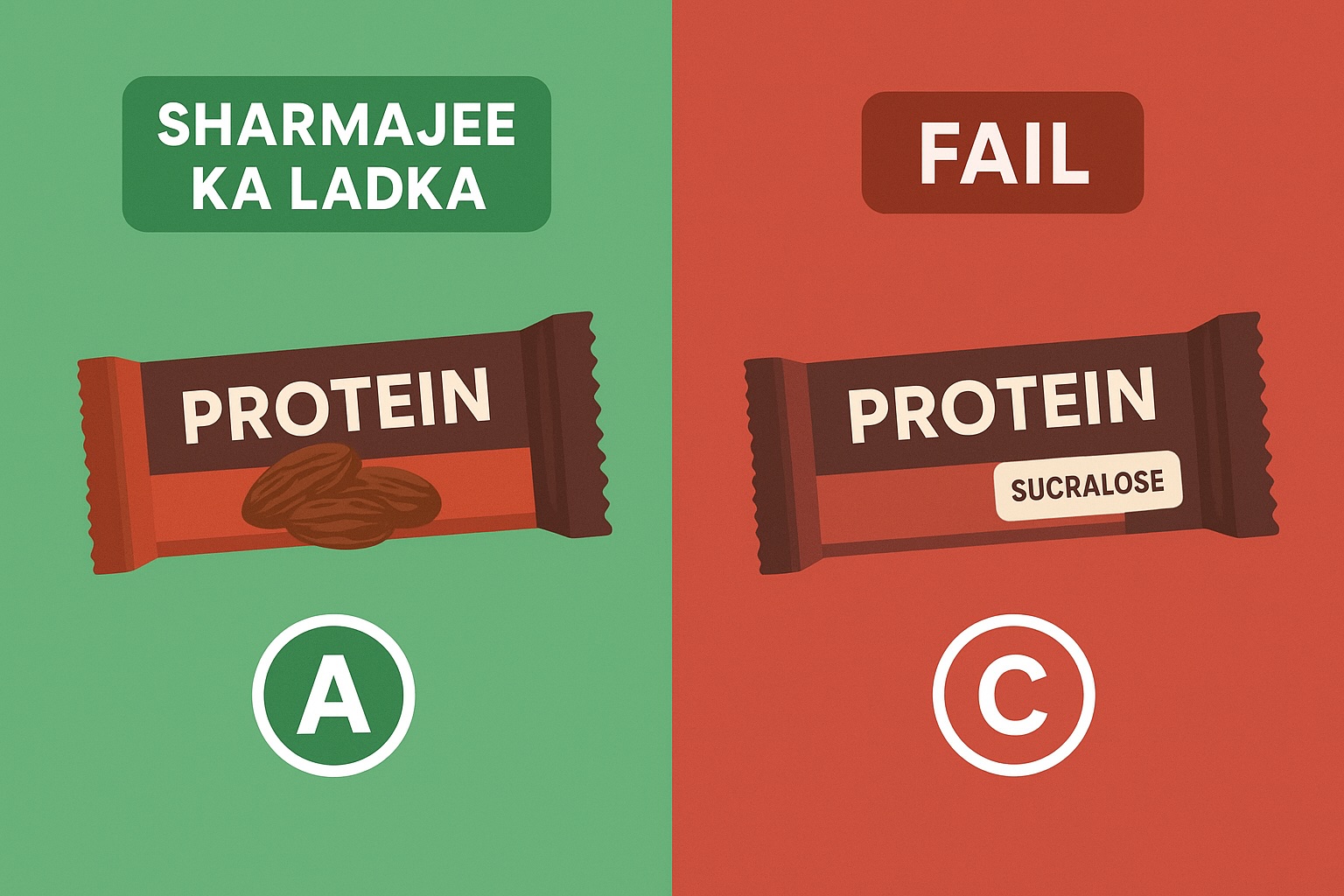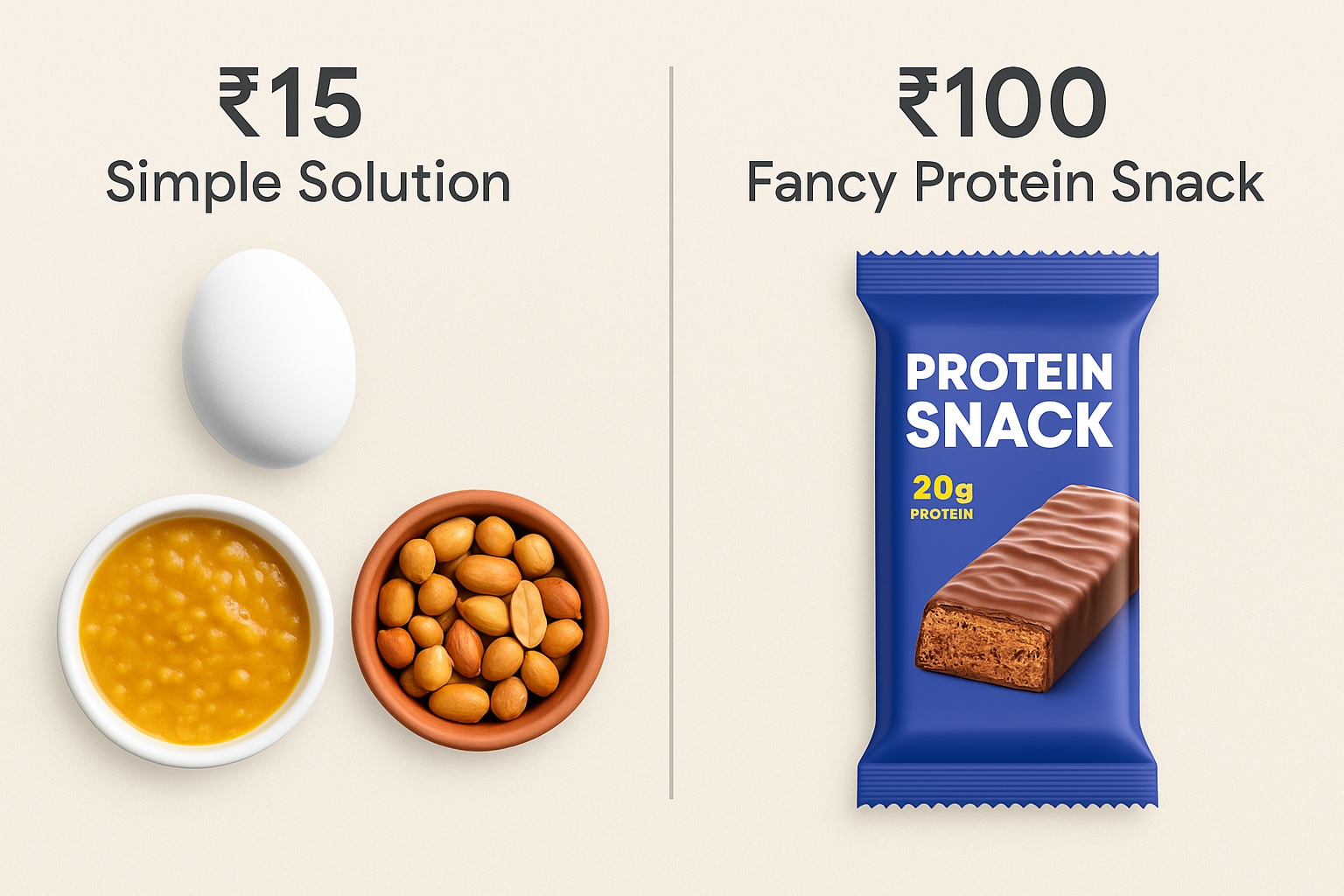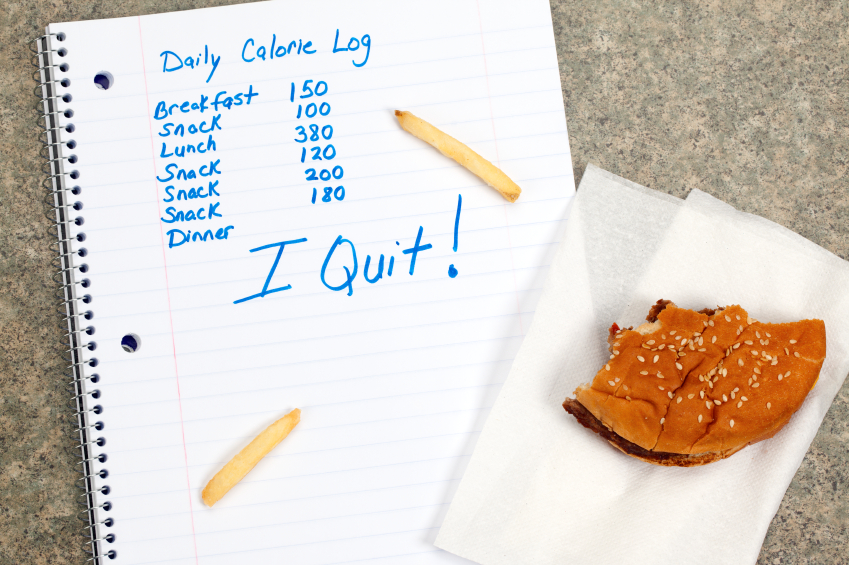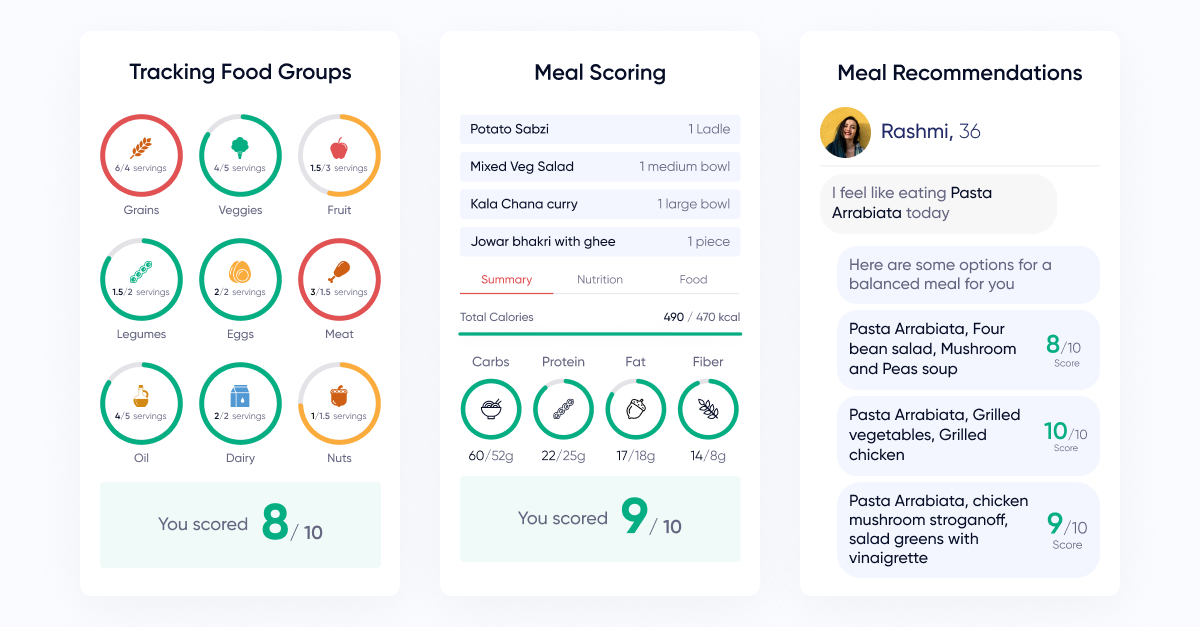
In every Indian neighborhood, there’s always that one comparison: “Sharmajee ka ladka went to IIT, then IIM, and now works at a Big 4.” Parents love using him as the gold standard.
Turns out, food rating systems today judge our food in the same way.
Protein powders, avocado salads, and energy bars with dates are the “Sharmajee ka ladka” of food ratings. They get A+ scores—while other everyday foods get graded down, regardless of context, affordability, or actual health impact.
But here’s the big question: What really is the basis of rating foods?

Most food rating apps, APIs, and packaged food labels simplify nutrition into a single letter or score. Sounds helpful, right? Except it hides the complexity of calories, nutrition data, food context, and affordability.
Why does adding a food preservative or artificial sweetener reduce the rating of a food?
Example:
👉 From a calorie deficit perspective (the real key to fat loss), the one with sucralose is more effective!
A chocolate with dates is rated A, while one with sugar is rated C. But both have almost the same calories. The difference? Dates are marketed as “natural” and “diabetic-friendly.”
That doesn’t change the energy balance—and for weight loss, calories matter more than labels.

Snacks made with palm oil are often rated low, called “unhealthy” or “poison.” But nutritionally, palm oil is no worse than ghee, butter, or sunflower oil.
Let’s be real—food rating systems heavily favor protein. Anything without protein is downgraded. But not all foods are meant to be protein-rich.
Context matters. Not every dish has to be a protein bar.
Here’s what a scientifically fair, consumer-friendly food rating should include:
As calorie-tracking, nutrition APIs, and food databases grow in India, consumers depend on these systems to guide their weight loss, calorie control, and healthy eating habits.
But if ratings are biased or misleading:
Food ratings can be powerful, but only if they’re:
✅ Evidence-based
✅ Contextual
✅ Affordable and fair
✅ Transparent in regulation
Otherwise, they’re just like Sharmajee ka ladka—setting an unrealistic standard, ignoring diversity, and leaving the rest of us feeling “less than.”
It’s time to rethink how we rate food. Not just by nutrients on paper, but by science, context, and accessibility.





